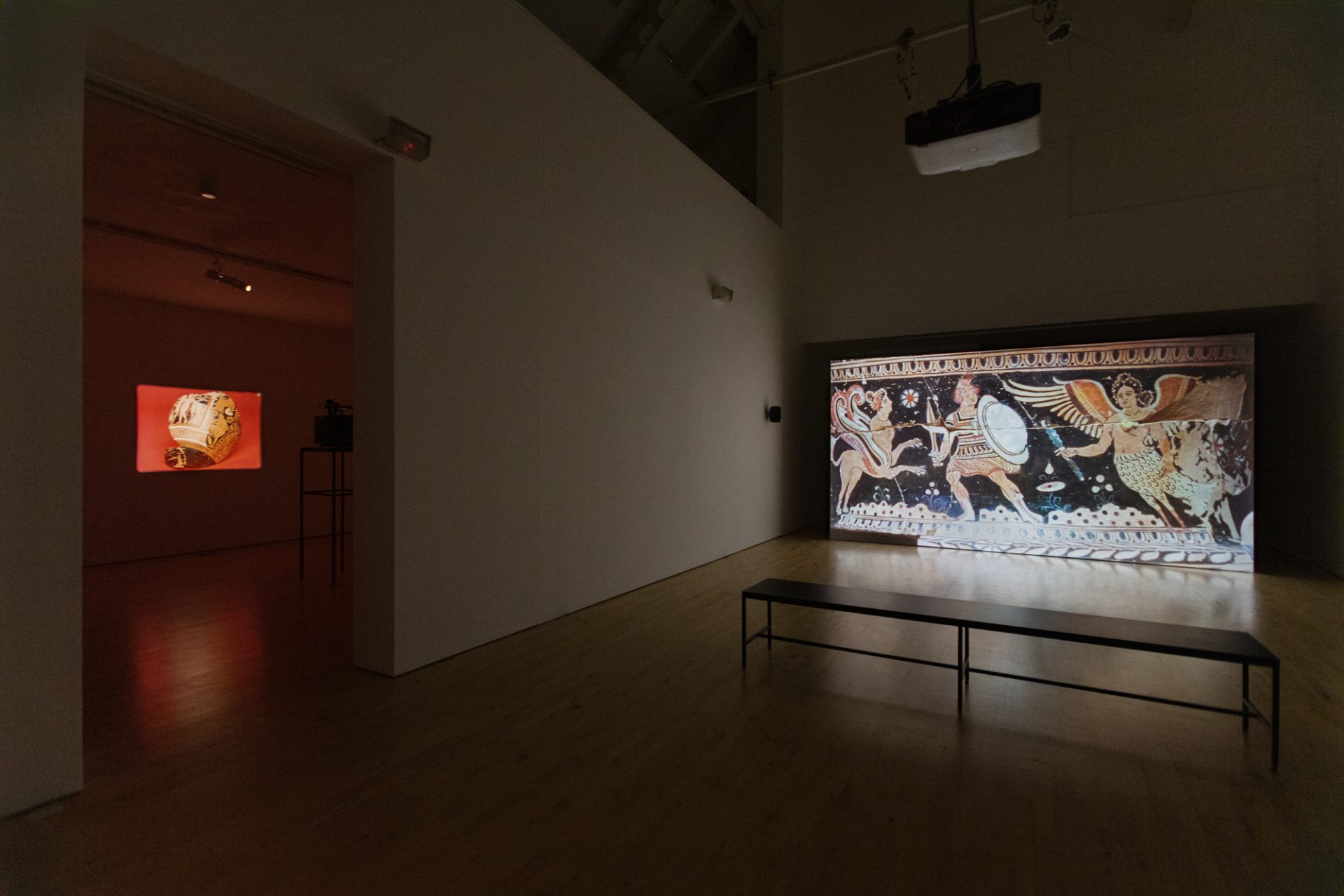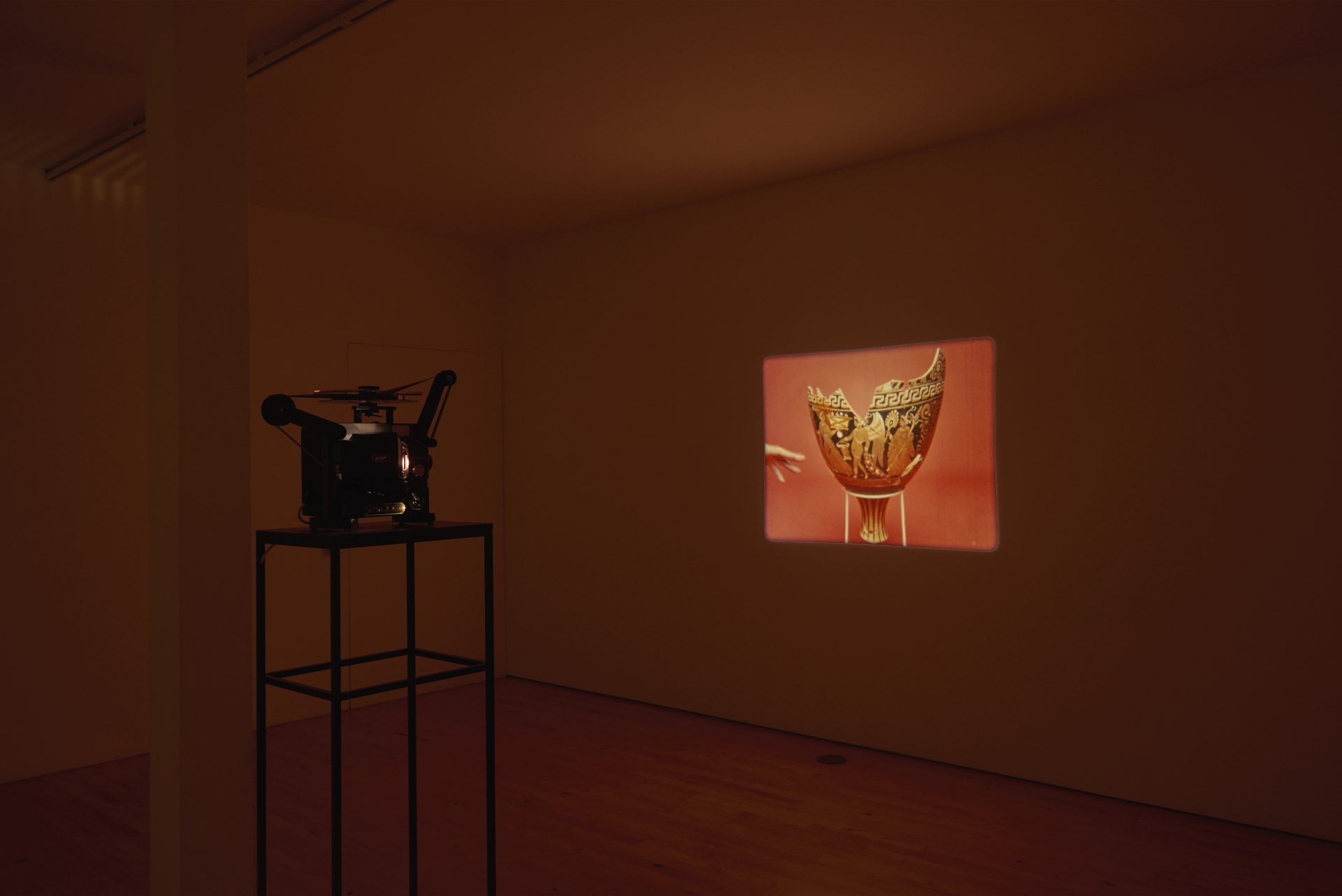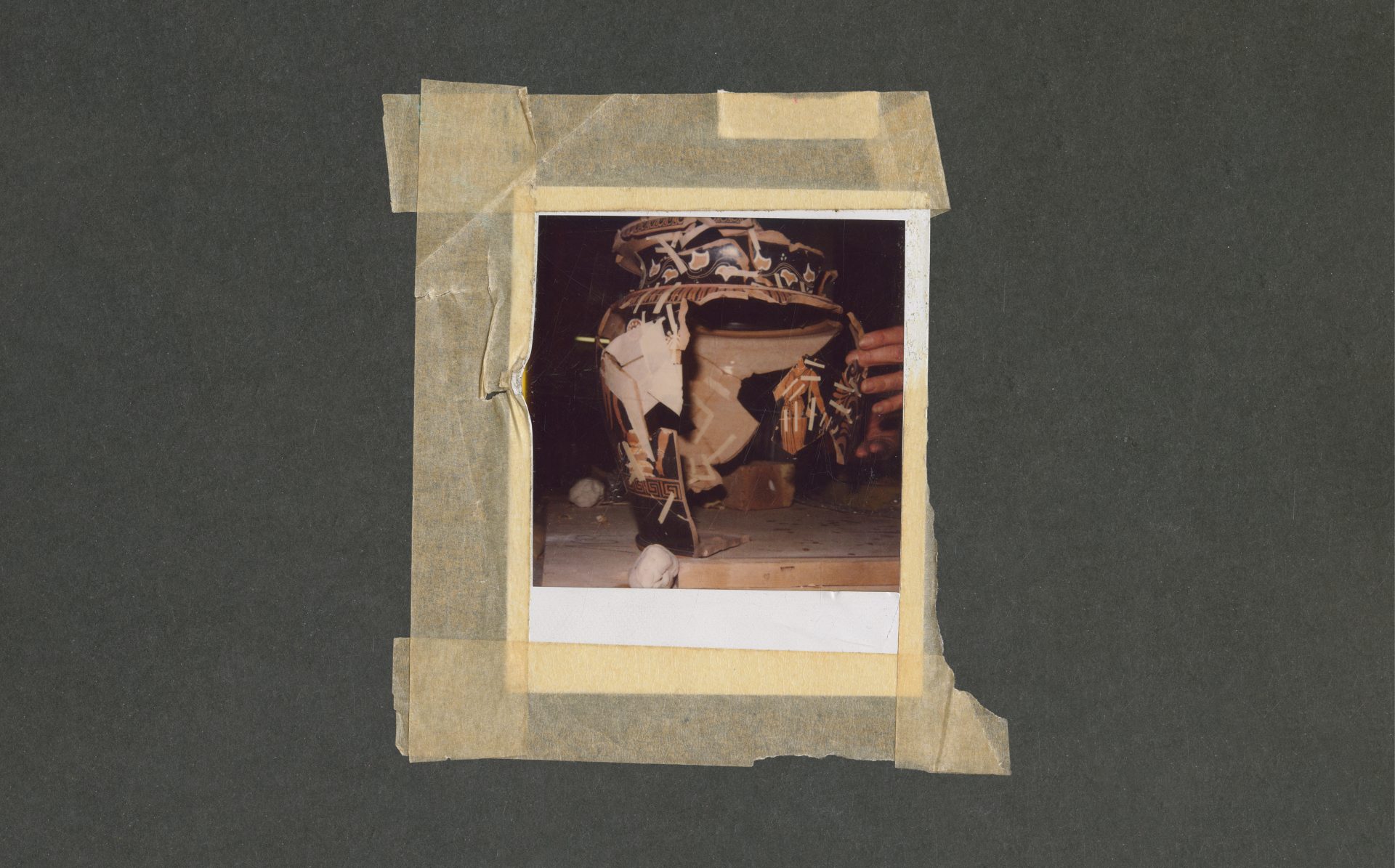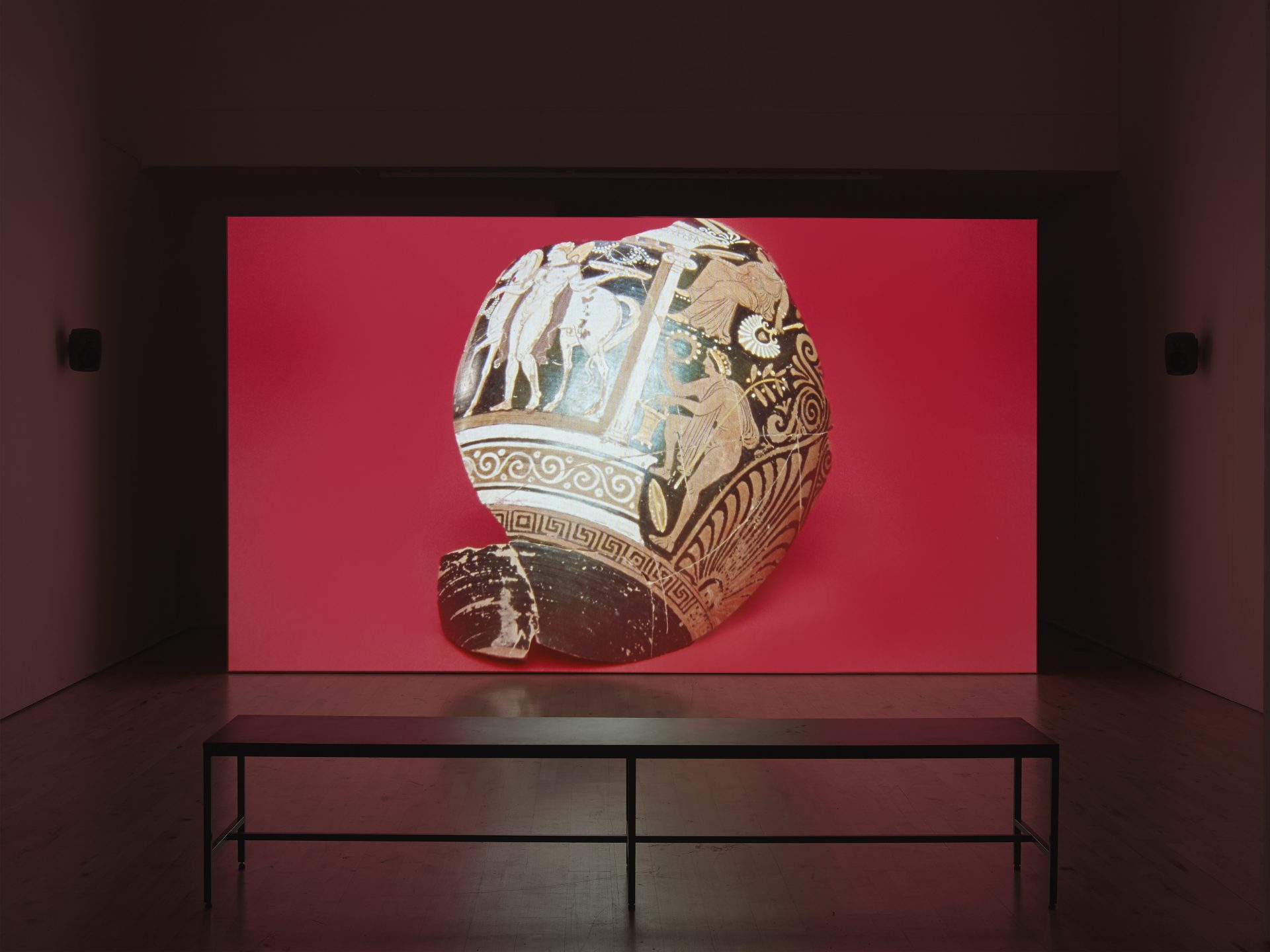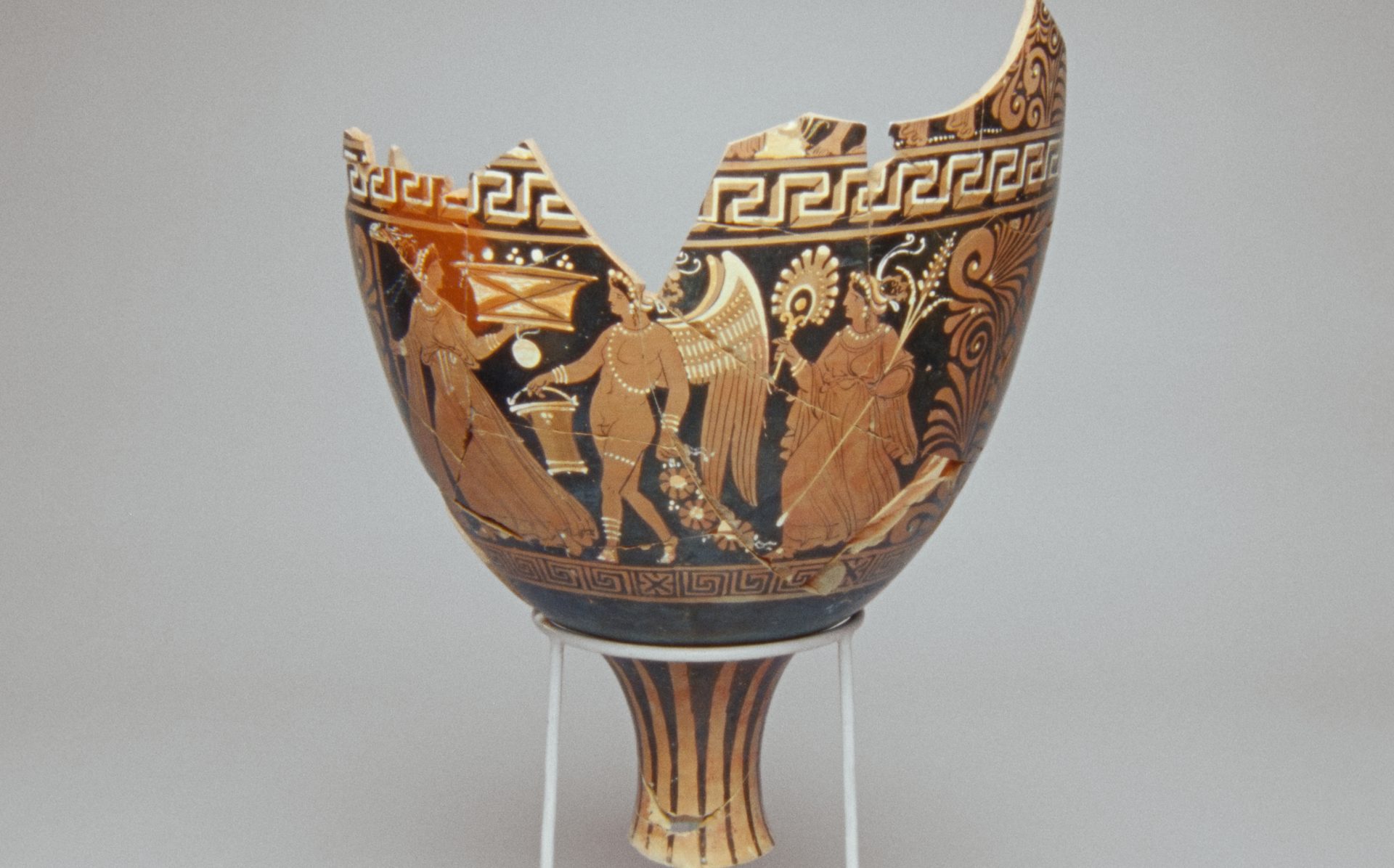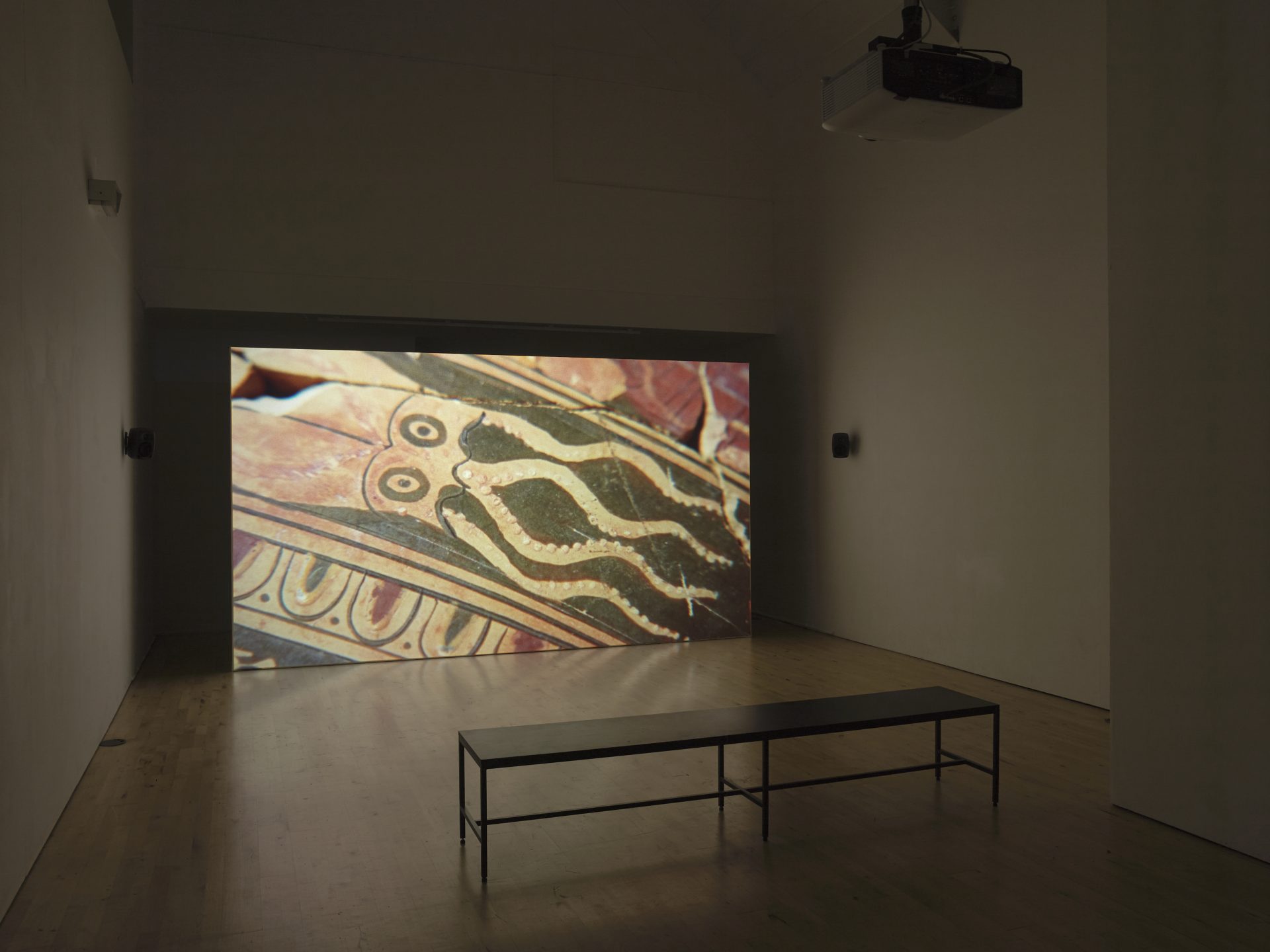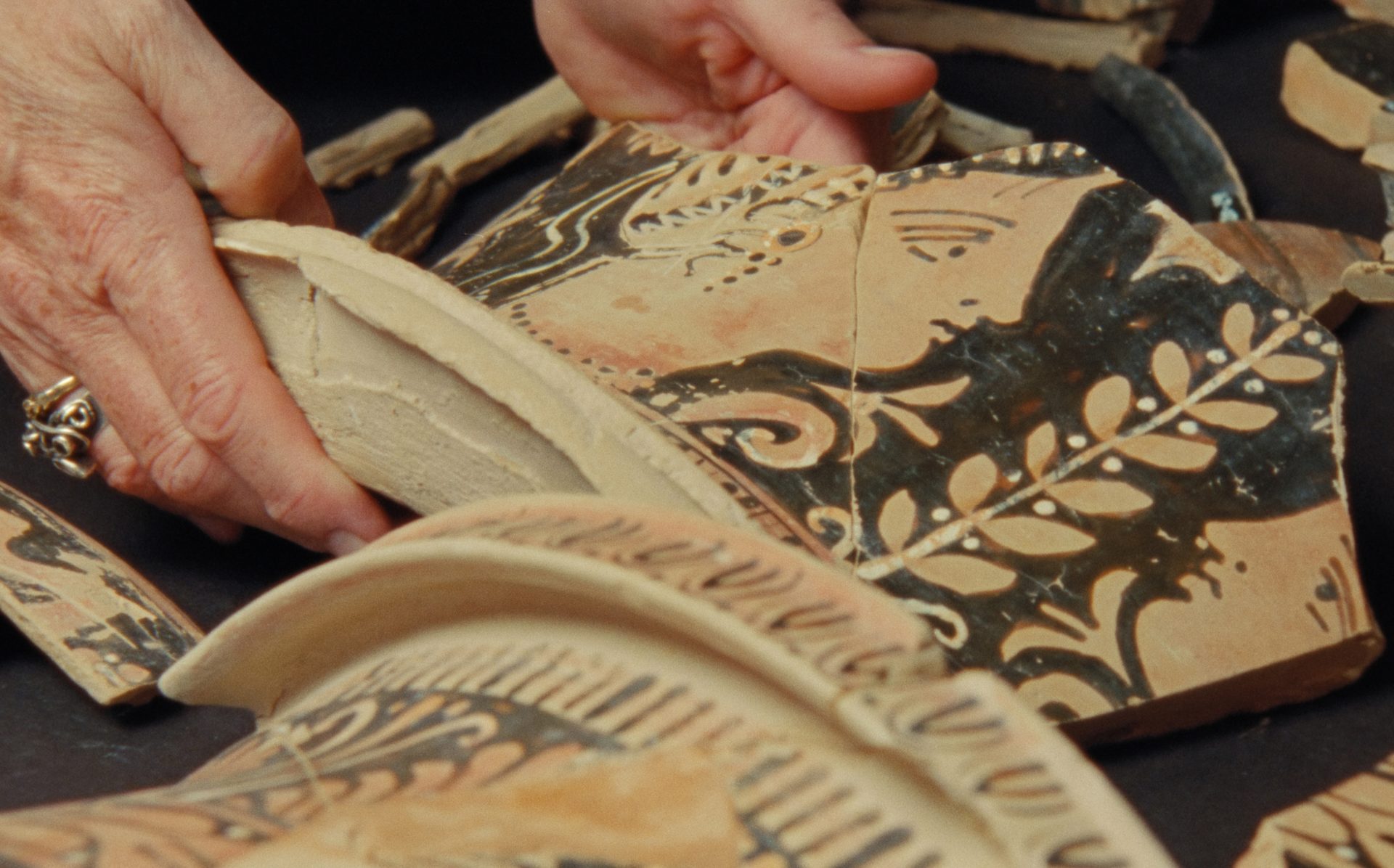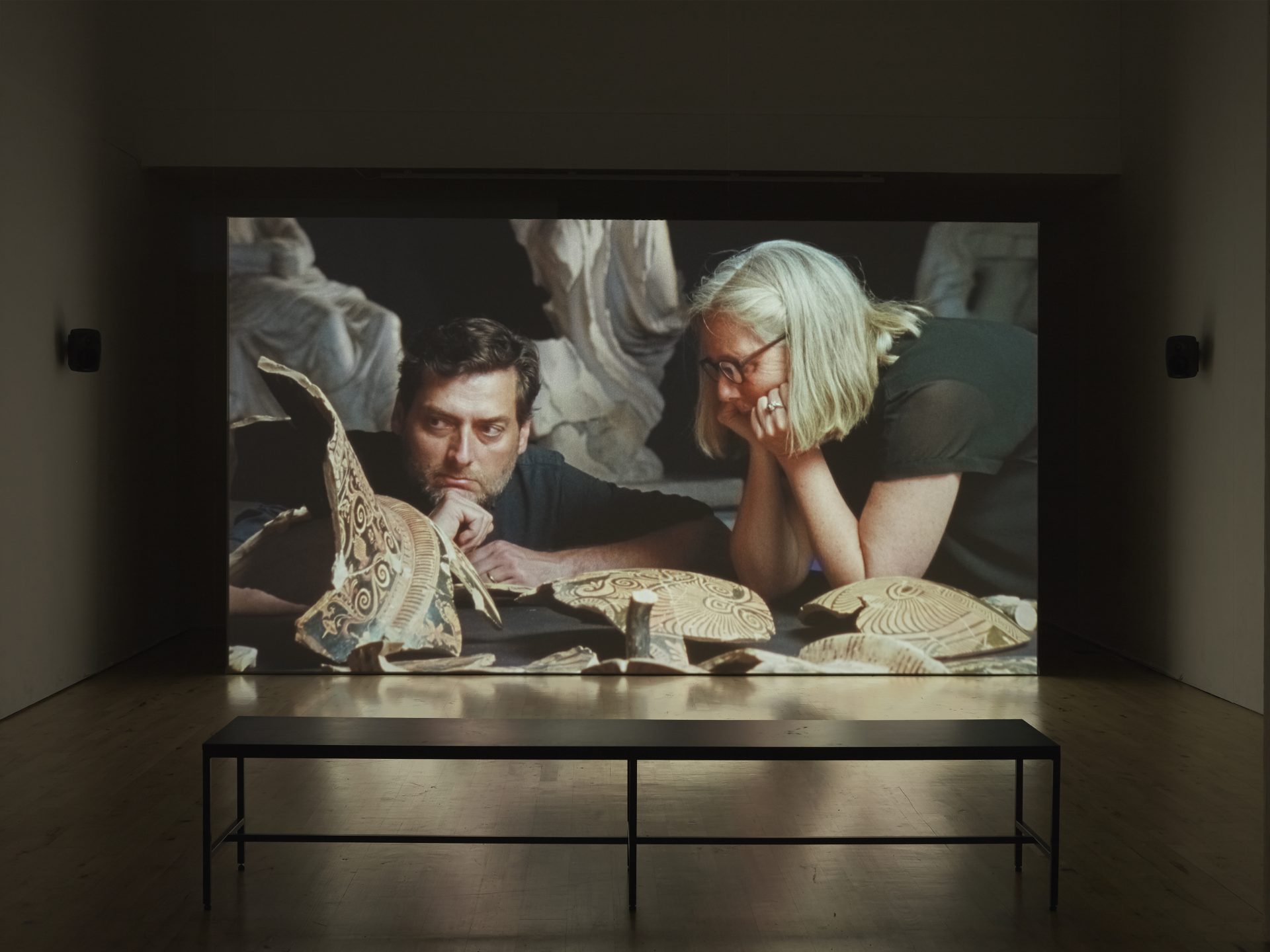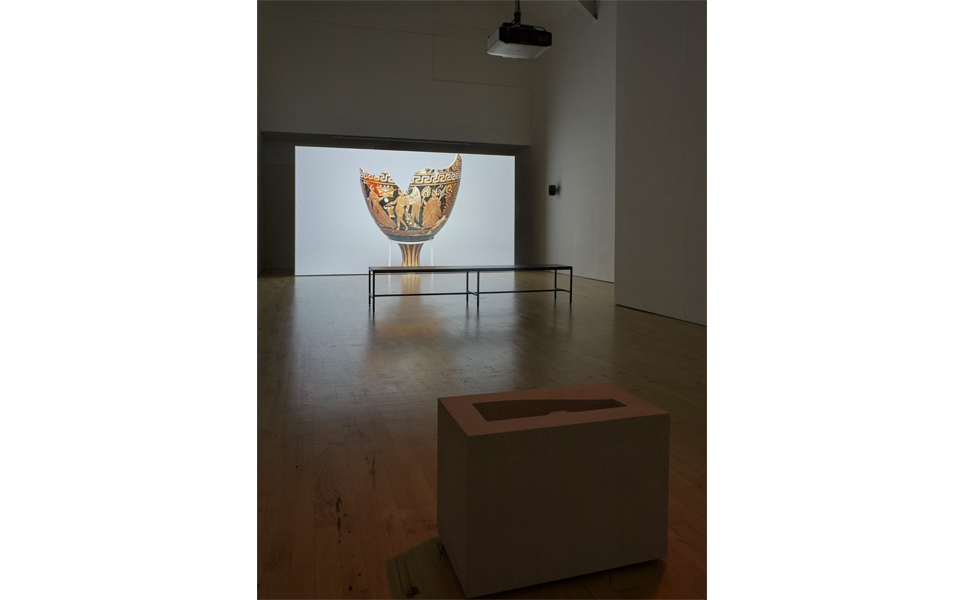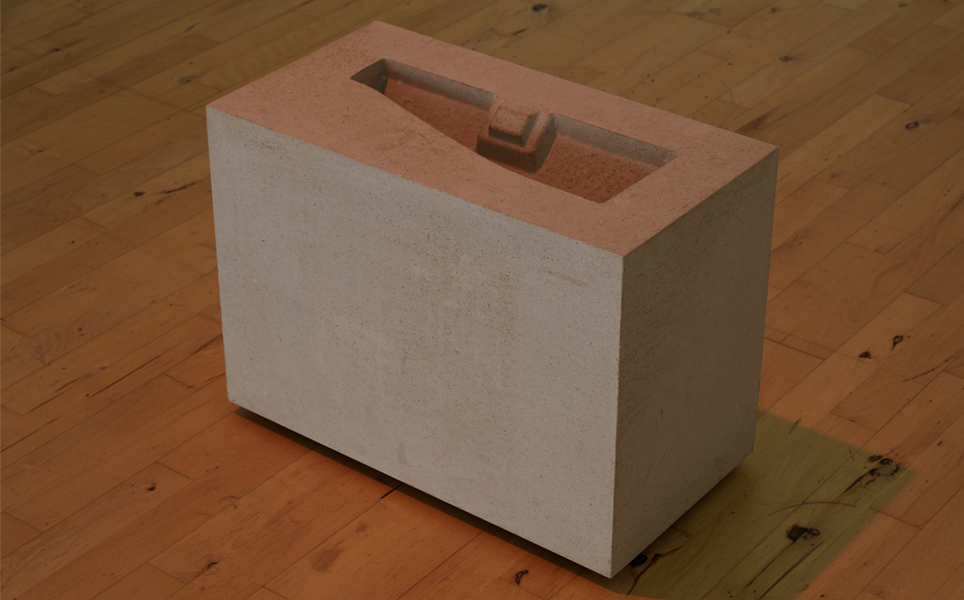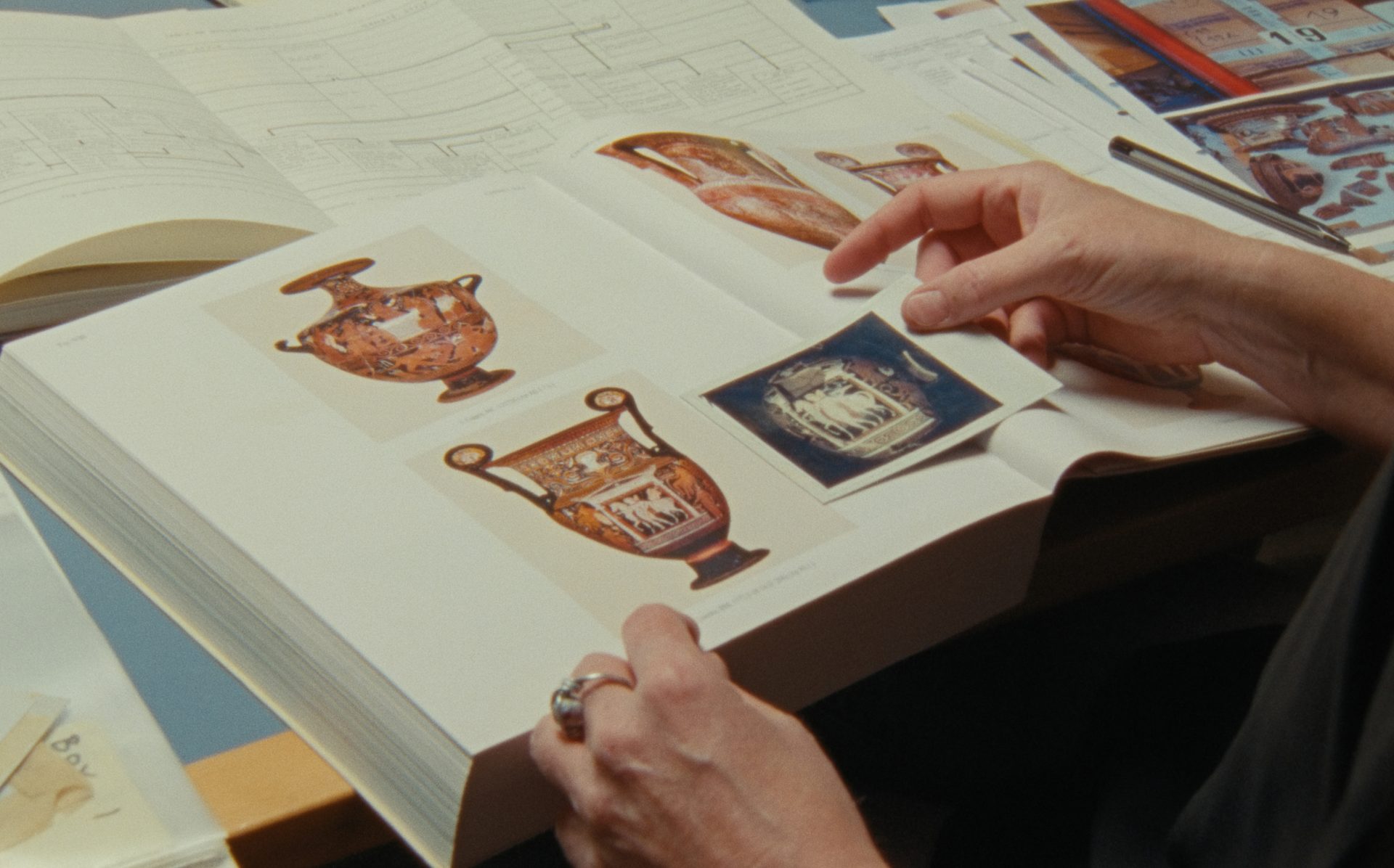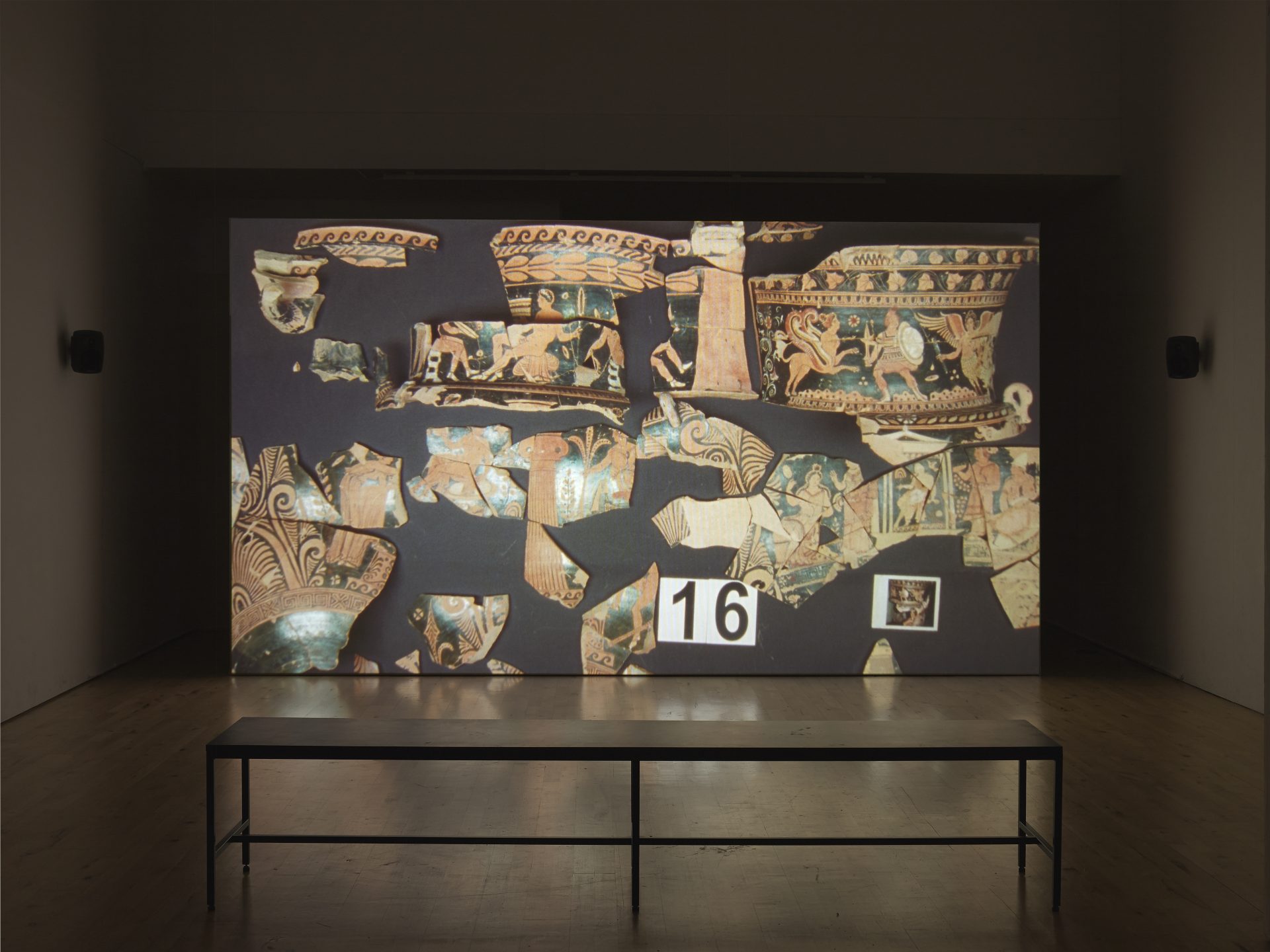In 2014, 45 crates of looted antiquities were discovered at Geneva Freeport in a warehouse belonging to disgraced antiquities dealer Robin Symes. They contained tens of thousands of archaeological remnants worth around £7 million. Three of the crates were sent to forensic archaeologist Dr Christos Tsirogiannis (Aarhus Institute for Advanced Studies) and Dr Vinnie Norskov (Director of Aarhus Museum of Ancient Art) for research.
An Excavation consists of a new body of work derived from Maeve Brennan’s long-term research project The Goods. Carried out in collaboration with Tsirogiannis, the multidisciplinary project is concerned with the international traffic in looted antiquities. Brennan’s works trace the circulation of objects through layered temporalities, focusing on figures such as restorers, joyriders and smugglers whose material actions and practices tie them to wider networks, histories and economies. Brennan has an ongoing commitment to working slowly with people to allow complex narratives to form, attending to the thick and entangled nature of her chosen subjects.
Since 2018, Brennan has observed and documented Tsirogiannis’ investigations, mapping the illicit antiquities network from looters and smugglers to auction houses and museums. By some estimations, antiquities form the largest trafficking economy after drugs and weapons. Using data from police raids, Tsirogiannis has compiled a digital archive containing documentation of over 100,000 looted artefacts which he uses to identify objects of potentially illicit origin when they appear in auction houses, museums and galleries, often leading to the repatriation of objects.
Central to Brennan’s exhibition is a major new film commission An Excavation (2022). The film documents Tsirogiannis and Norskov’s investigation into a series of vases from the Geneva Freeport crates. Made in the 4th century BC by Apulian artisans, these vases remained buried in tombs for 2500 years before they were clandestinely excavated from their now irrecoverable contexts. The objects’ journeys through the hands of looters, smugglers, restorers and dealers are counterpointed by the hand-painted stories that adorn them. Made for burials, the vases depict scenes from the underworld – forensic and mythological narratives start to intertwine.
In 1995, illicit antiquities middleman Pasquale Camera was killed in a car crash. Inside his glove compartment, the Italian police force discovered a stack of photographs of looted antiquities. This evidence led to a series of raids during which the authorities discovered a hand-drawn diagram by Camera, indicating the routes of looted artefacts from tombaroli (tomb robbers) to international markets. This diagram was the basis for a large-scale criminal investigation into key figures within the network, including notorious dealers Giacomo Medici, Gianfranco Becchina and Robert Hecht. In The Glove Compartment (Renault 21) (2022) the internal cavity of Camera’s glovebox milled into a block of limestone, his casual hiding place made visible.
Taking Camera’s organigram as its starting point, Illicit Antiquities Network is an ambitious digital project, developed throughout Brennan’s Fellowship, which follows a series of artefacts through the trafficking chain, from looters to museums. The data from each case feeds a centralised map that visualises connections across time, location, individual and institution.
An Excavation continues Brennan’s interest in forms of repair and reparative histories. Her film The Drift (2017) focused on three figures preserving objects in contemporary Lebanon, mapping converging lines between protected ancient temples, smuggled antiquities and traded car parts. This led her to an interest in subsistence looting as a form of livelihood in ‘source’ countries sustained by a demand in ‘market’ countries. The exodus of cultural heritage through underground trafficking chains can be viewed as a continuation of colonial and imperial extraction. The actions of looters and launderers become part of a tangible material process that pulls at the distinction between licit and illicit cultural traffic. Ariella Azoulay writes of museums ‘For these institutions to be transformed or reformed, it is essential that looting be acknowledged as their infrastructure.’ The Goods aims to make this infrastructure visible, focusing on the patient and meticulous work of Tsirogiannis and others to hold institutions to account and make some small repairs to the damage done by an extractive history.
Events | All Welcome
Online Salon
Wed 22 June 3–4:30pm
Maeve Brennan discusses the broader context and implications of her collaboration with forensic archaeologists Dr Christos Tsirogiannis and Dr Vinnie Norskov. Watch a recording of this discussion online here.
Onsite Event
Wed 29 June 3–4:30pm
Maeve Brennan in conversation about her current project and research-based practice with Kingston School of Art Professor Elizabeth Price. Watch a recording of this conversation online here.

